The Question I Get Asked Most: "Where Do You Get Your Coffee From?"
Honestly? I reckon most of the time it’s just polite small talk. Probably because I’m a bit awkward and it gives people an easy win.
But every now and then, someone genuinely wants to know the nitty gritty of where coffee comes from, and how the hell it ends up in a Dog & Gun drip filter.
So — this one’s for you.
Short Answer: We Source Coffee from the Best Growing Regions on Earth
We get our beans from places like Colombia, Ethiopia, Brazil, and Papua New Guinea — though this can change seasonally.
Why those countries? Because they sit in the “coffee belt” — the sweet spot for growing high-quality arabica.
Each region produces unique flavours depending on the soil, climate and altitude. For example:
-
Ethiopia = fruity, floral notes
-
Colombia = caramel and chocolate
-
Brazil = nutty and smooth
-
PNG = biscuity, sweet, clean
And altitude matters. The higher the coffee is grown (above 1,200m), the slower it matures — and the sweeter and richer the flavours get. That’s why elevation and origin are everything when building flavour.

What About Aussie-Grown Coffee?
We get asked this a lot.
Short answer: It’s not viable.
Coffee is a labour-intensive crop. In Colombia, a farmhand might earn $15–$25 AUD a day.
In Australia, you’d have to pay that per hour — if you could even find someone willing to do the back-breaking work.
It’s just not sustainable without jacking prices to a point where most people wouldn’t (or couldn’t) pay for it.
That’s the uncomfortable reality of the coffee supply chain. We rely on cheap labour in developing nations to make coffee affordable.
Some roasters are trying to change that by paying premiums directly to farmers — and we support that idea — but it’s hard to say how much of that actually reaches the workers in the fields.

From Tree to Cup: The Journey of Coffee
Let’s break it down simply.
-
A coffee tree takes 3–4 years to produce fruit
-
Each cherry contains two beans
-
A full-grown tree might yield enough for 20–40 cups a year
Yep — one tree = maybe a month's worth of coffee for one person.
Farmers deal with droughts, floods, fires, pests, disease, political instability, fuel prices, labour shortages… and that’s just to get a harvest.
Then there’s the picking:
Coffee ripens unevenly — even on the same branch — so workers have to hand-pick each cherry, often in blistering heat or rain.
After that:
-
The cherries are pulped to extract the green beans
-
Then washed, sorted, and dried
-
Then packed into sacks and shipped across the world
All through dodgy roads, ports, and “creative” taxes.

Roasting: Where Dog & Gun Gets Involved
Once those green beans arrive at our warehouse, the real magic starts.
Our team at the Dog & Gun roastery (yep, we roast in-house in Australia) tests the beans for moisture, density, appearance, and smell.
If it’s a new or unique origin, we’ll run a 500g sample roast to make sure we’re happy with it before it goes into production.
Then we fire up the Loring roaster — a beast of a machine that costs as much as a house — and start cooking.
Each origin reacts differently to heat, so we use a combo of science, data, and sensory skill (sight, smell, intuition) to nail the roast.
Screw it up by even 20 seconds and you’ve got coffee that tastes like soot and sadness.
We don’t send that out. We bin it. It hurts financially, but quality comes first.
From Roast to You
Once roasted, coffee rests for 24–48 hours so the flavours can stabilise.
When it's tasting right:
We grind it, Load it into the drip filter machine, Hand-pack it into cartons & ship it off to you
From there, Auspost or a courier gets it to your doorstep (hopefully).
And you get a brew that costs about $2 a cup — ready for adventure, no barista required.
Let That Sink In
That $2 cup you just smashed?
It involved:
Farmers, Pickers, Processors, Exporters, Truck drivers, Roasters, Packers & Couriers.
We’re all part of the supply chain that gets coffee from a tree in Colombia to your swag in the Snowys.

So… Should Coffee Be This Cheap?
Up to you.
But next time you rip into a brew, take a moment to appreciate just how bloody complex and precious this stuff is.
We’re damn lucky to have it — and even luckier to make a living sharing it with you.
Cheers,
Shaun


